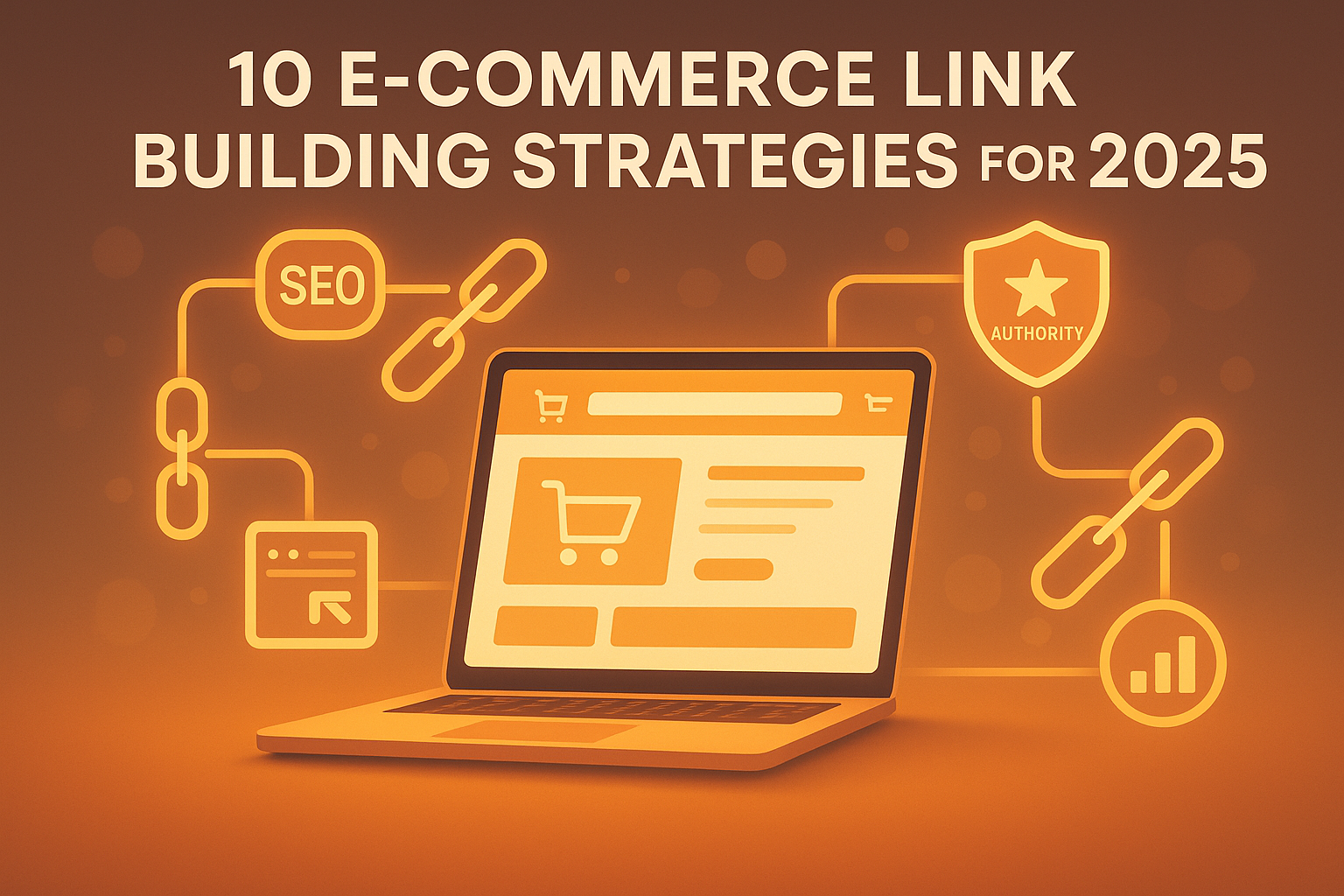Online reviews are a major factor in local SEO rankings. Search engines rely on reviews to gauge trust, relevance, and customer satisfaction. Here’s the key takeaway: businesses with more positive, recent, and detailed reviews tend to rank higher in local search results.
Why Reviews Matter:
- Impact Rankings: The number, recency, and content of reviews directly influence visibility in search results.
- Trust & Clicks: Positive reviews attract more clicks and build trust with potential customers.
- Keywords in Reviews: Customer reviews that mention specific services or products help search engines better understand your business.
Key Findings:
- Responding to reviews (both positive and negative) improves rankings and shows engagement.
- The importance of reviews varies by industry:
- Service businesses need steady, high-quality reviews.
- Restaurants benefit from frequent, visually appealing reviews.
- Healthcare sees strong results even with fewer reviews.
- Generating reviews is best done through email follow-ups, text messages, or QR codes.
How to Manage Reviews:
- Respond promptly (within 24-48 hours) to all feedback.
- Use tools like Google Analytics and review management platforms to track performance.
- Monitor metrics like review count, average rating, and local search visibility.
Conclusion:
Reviews are not just about rankings - they’re about building trust and driving customer engagement. Whether you’re a restaurant, retailer, or service provider, a strong review strategy can transform your local SEO performance.
How Local Reviews Impact SEO
Review Factors That Impact Local SEO Rankings
Reviews play a key role in improving local SEO rankings, but it's not just about collecting them - it's about the quality of the reviews and how business owners engage with them. These factors can significantly boost a business's online visibility.
Review Content Quality and Keywords
The content of customer reviews gives search engines valuable clues about what a business offers and how people perceive its services. Reviews often include naturally occurring keywords that help search engines match businesses with relevant search queries. For instance, when a customer writes about "top-notch brake repair service" or "amazing gluten-free pizza in downtown", these phrases can directly contribute to the business appearing in related search results.
Detailed reviews that mention specific services, products, or unique experiences provide search engines with even more data to work with. Plus, reviews that include photos or videos offer additional opportunities for keyword optimization. By encouraging customers to leave detailed feedback, businesses can enrich their keyword strategy and improve their visibility in search rankings. Embedding these reviews on your website can also boost indexing and enhance your SEO efforts.
Business Owner Response Impact
How a business owner responds to reviews can influence both search engine rankings and customer trust.
Google specifically advises businesses to manage and respond to reviews as a way to improve local visibility.
When owners reply to reviews - whether positive or negative - it shows active management and creates additional keyword opportunities. A professional response to negative feedback, in particular, can showcase accountability and a commitment to resolving customer concerns. Businesses that consistently engage with reviews tend to see improved local search rankings, while ignoring reviews can erode customer trust over time.
How Review Impact Varies by Industry
Customer reviews play a key role in local SEO rankings, but their influence isn't the same across all industries. Understanding these differences allows businesses to set realistic goals and create review strategies that align with their specific sector.
Review Influence Across Different Sectors
In service-based industries - like plumbing, electrical work, and HVAC repair - positive reviews are essential. These businesses rely heavily on customer trust, as people want reassurance before inviting professionals into their homes. A steady flow of glowing reviews can make all the difference.
In healthcare and professional services, privacy concerns often limit the number of reviews. However, each review carries significant weight, helping to build credibility and trust over time.
Restaurants and hospitality businesses benefit directly from active review profiles that include user-submitted photos. Fresh, visually appealing reviews not only boost local search rankings but also showcase a current and inviting experience for potential customers.
For retail businesses with physical stores, reviews often appear on larger platforms. While review volume is important, the overall customer experience - both online and in-store - plays an even bigger role in shaping local SEO success.
Review Metrics Comparison Across Industries
The frequency and impact of reviews vary depending on the industry. Here's how it breaks down:
- Service businesses: Need a consistent stream of high-quality reviews to maintain trust.
- Healthcare and professional services: Tend to gather fewer reviews, but each one holds substantial influence.
- Restaurants and hospitality: Thrive on regular, up-to-date reviews, especially those with photos.
- Local retailers: Should focus on delivering an excellent customer experience, as this matters more than sheer review numbers.
Timing also matters. For restaurants, fresh feedback is crucial to reflect current operations and attract diners. On the other hand, professional services can maintain a strong reputation with older reviews that highlight long-term reliability. Tailoring review strategies to these nuances ensures businesses can effectively manage and leverage customer feedback for better local SEO outcomes.
sbb-itb-5be333f
How to Generate and Manage Reviews
Encouraging positive reviews takes a proactive approach. By setting up clear and compliant systems, you can make it easy for happy customers to share their experiences. Below, we’ll dive into effective methods for generating reviews and strategies for managing them, building on the earlier discussion about how reviews impact local SEO.
Review Generation Methods
Email follow-ups are a tried-and-true method for requesting reviews. Sending automated emails 3–5 days after a service or purchase works well because the experience is still fresh in the customer’s mind. Include direct links to your Google Business Profile or other review platforms to make the process seamless. Keep the email short, friendly, and personal - thank the customer for their business before asking for feedback.
Text message requests often see better response rates than emails, especially for service-based businesses. A quick SMS sent within 24–48 hours of completing a service can be highly effective. Personalize the message by including the customer’s name and referencing the specific service they received.
In-person requests are great for businesses like restaurants, retail stores, or service providers where face-to-face interactions happen regularly. Train your staff to recognize satisfied customers and encourage them to leave a review right after they’ve expressed their appreciation.
QR codes can make the review process incredibly convenient. Add them to receipts, business cards, or table tents so customers can scan and leave a review directly from their smartphones. This method works particularly well in restaurants and retail settings, where customers often have a moment to spare.
Follow-up phone calls are a strong option for high-value services like home renovations, legal assistance, or healthcare. These calls not only help you gauge customer satisfaction but also provide an opportunity to address concerns and ask for a review.
Review Management Best Practices
Respond to every review within 24–48 hours to show customers that their feedback matters. For positive reviews, thank the customer and address specific points they mentioned to make your response feel genuine. When dealing with negative reviews, acknowledge their concerns, apologize if necessary, and offer to resolve the issue offline.
Keep responses professional and personalized. Avoid using generic, copy-paste replies that can make your business seem indifferent. Instead, reference details from the review to show you’ve read and considered the feedback carefully.
Handle negative feedback constructively. Instead of making excuses, focus on finding solutions. Acknowledge the customer’s experience, take responsibility when appropriate, and explain how you’re addressing the issue. This approach reassures potential customers that you’re committed to improvement.
Monitor review platforms regularly to stay on top of new feedback. Tools like Google Alerts or reputation management software can notify you of new reviews, helping you respond promptly.
Use reviews to improve your business. Pay attention to recurring themes in customer feedback. For example, if multiple reviews mention slow service or issues with a specific product, address these problems directly to enhance your operations.
Review Generation Approaches: Pros and Cons
Here’s a quick comparison of popular review generation methods to help you decide which works best for your business.
| Method | Advantages | Disadvantages | Best For |
|---|---|---|---|
| Email Follow-up | Automated, professional, trackable metrics, broad reach | Lower response rates, may land in spam, requires email collection | Service businesses, e-commerce, professional services |
| Text Messages | High open rates, personal touch, mobile-friendly | Character limits, phone number collection needed, potential privacy concerns | Local services, restaurants, appointment-based businesses |
| In-Person Requests | Builds relationships, high conversion rates, immediate response | Requires staff training, inconsistent execution, limited to face-to-face interactions | Retail stores, restaurants, service appointments |
| QR Codes | Easy to use, modern, works across demographics, trackable | Requires smartphone knowledge, strategic placement needed | Restaurants, retail, events, waiting areas |
| Phone Follow-up | Personal, allows issue resolution, builds trust | Time-consuming, requires skilled staff, may feel intrusive | High-value services, B2B, professional services |
Timing and Incentives
Timing is key when it comes to review requests. Service-based businesses should ask for reviews immediately after a job is completed, while restaurants often see success by requesting reviews during the meal or shortly after. For retail businesses, a follow-up 2–3 days after purchase works well, giving customers time to use the product before leaving feedback.
While incentive programs can encourage reviews, be cautious about following platform guidelines. For instance, Google prohibits compensating customers for reviews. Instead, focus on delivering excellent service that naturally inspires authentic feedback.
Lastly, staff training is essential for consistent efforts. Teach your team how to identify happy customers and ask for reviews in a way that feels natural and not overly pushy. With a well-trained team, your review generation process will feel seamless and genuine.
Measuring Review Impact on SEO Performance
To understand how your efforts with reviews are influencing local SEO performance, it's crucial to track and analyze the right data. Without measurement, improving your strategy becomes guesswork. Start by establishing baseline metrics before launching any review campaigns, then monitor changes over time to see what’s working and what isn’t. Below, we’ll break down the key metrics and tools you can use to measure these improvements effectively.
Tracking Review Impact on SEO Metrics
Once you’ve built a solid system for generating reviews, the next step is to evaluate how they’re affecting your SEO. Local search rankings are a great place to start. Keep an eye on where your business ranks for important keywords, like "dentist near me", by tracking positions weekly from various locations. This helps you see how the volume and quality of your reviews are influencing visibility.
Google Business Profile insights are another valuable resource. These metrics - like discovery searches, direct searches, and user actions (e.g., calls or website visits) - can show how customers are finding your business. Enhanced review profiles often lead to a noticeable uptick in these discovery metrics.
Even if your rankings don’t change, higher star ratings can improve click-through rates. Use Google Search Console to monitor this by comparing impressions to clicks and see how your reviews impact user engagement.
To measure direct outcomes, set up conversion goals in Google Analytics. Whether it’s tracking phone calls, form submissions, or online purchases, these goals can reveal how improved reviews build trust and drive conversions.
Pay attention to review velocity, which is the rate at which you receive new reviews. A steady flow is ideal; sudden spikes or inconsistent activity can sometimes signal issues.
Competitor benchmarking is also key. Compare your review count, average ratings, and rankings with those of your competitors. This helps you determine whether your progress stems from your efforts or broader trends in the market.
Finally, focus on your visibility in the local 3-pack (the top three results in Google’s local search results). These placements are prime real estate and can drive significant traffic. Track when your business appears in the local pack for different search terms and see how this aligns with your review metrics. Businesses with more reviews and higher ratings often dominate these spots.
Tools and Resources for Review Management
To turn these metrics into actionable insights, you’ll need the right tools. Here are some options to consider:
- Google Analytics 4: This tool lets you track how reviews influence user behavior and conversions. Use custom events and attribution modeling to gain deeper insights into review-driven traffic.
- Google Search Console: Monitor how your business appears in search results, track clicks and impressions for local queries, and identify technical issues affecting visibility. The Performance report is especially useful for tracking changes as your review profile improves.
- Local SEO platforms: Tools like BrightLocal, Whitespark, or Local Falcon provide detailed data on local rankings, competitor analysis, and review monitoring across multiple platforms.
- Review management software: Platforms like Podium, Grade.us, or ReviewTrackers simplify the process of tracking and responding to reviews. Most offer dashboards, automated workflows, and integrations with your existing systems.
- Social listening tools: Tools like Mention or Google Alerts notify you of reviews or mentions of your business across the web, ensuring you can respond to feedback promptly.
For businesses looking for all-in-one solutions, the Top SEO Marketing Directory is a helpful resource. It features a curated list of review management tools and local SEO services, along with detailed comparisons to help you find the right fit for your needs and budget.
As your review management efforts grow, reporting dashboards become essential. Create monthly reports that combine review data with SEO performance metrics to identify trends and opportunities. Key metrics to include are total review count, average rating, response rate, new reviews per month, and changes in local search rankings and traffic.
Attribution modeling is another powerful tool for measuring the ROI of your review strategy. Use Google Analytics or specialized software to see how review-driven traffic compares to other sources in terms of conversions. This data can help you justify and refine your investment in review management.
Conclusion: Reviews Drive Local SEO Success
As we've seen, reviews play a crucial role in driving local SEO success. They’re not just a ranking factor - they’re a powerful tool for increasing visibility, building trust, and engaging potential customers. A strong review profile, marked by high volume, recent activity, and positive feedback, can significantly improve a business’s local search performance.
Reviews influence search engine algorithms, but they also affect customer decisions. Think about it: when someone sees a business with dozens of glowing five-star reviews compared to one with only a few, the choice is obvious. And search engines take notice of these patterns, rewarding businesses with better visibility.
Different industries require different review strategies. For example, restaurants may thrive on a steady stream of fresh reviews that highlight ongoing quality. On the other hand, a law firm might benefit more from detailed reviews that showcase expertise and successful case outcomes. Adapting your review approach to align with your industry’s needs and customer behavior is key.
Despite their importance, many businesses still face challenges in managing reviews effectively. Developing a system to consistently generate reviews, responding promptly and professionally, and tracking results can make all the difference. These practices not only enhance visibility but also give businesses a long-term edge in local SEO.
The best time to strengthen your review strategy is now - before competitors fully leverage this advantage. For more tools and strategies to boost your SEO efforts, visit Top SEO Marketing Directory.
FAQs
How do online reviews affect local SEO rankings for businesses in different industries?
Online reviews are a game-changer for boosting local SEO rankings for businesses across the United States. In fact, they’re believed to account for 9% to 15% of local search ranking factors. The more reviews you have - and the better your star ratings - the more likely your business is to show up prominently in local search results.
Beyond just rankings, positive reviews help establish trust and credibility with potential customers. They also send strong signals to search engines about your business's relevance and authority in its niche. For businesses looking to attract local customers, improve click-through rates, and build a strong reputation, reviews are an essential piece of the local SEO puzzle.
How can businesses respond to reviews to improve their local SEO rankings?
Responding thoughtfully to online reviews plays an important role in improving local SEO. When dealing with positive reviews, take a moment to sincerely thank the customer. Reference specific details they mentioned in their feedback to show you’re paying attention, and invite them to continue engaging with your business. This approach not only builds trust but also nurtures customer loyalty.
Handling negative reviews requires a slightly different approach. Start by acknowledging the issue and offering a genuine apology. Provide a solution whenever possible, and if the situation demands it, move the conversation offline to address the matter privately. Throughout the process, maintain a professional and empathetic tone to show you value their concerns.
Engaging with all reviews - both positive and negative - shows that your business is attentive and dependable. This not only strengthens your connection with customers but also signals reliability to search engines, helping boost your visibility in local search results.
How can businesses measure the impact of customer reviews on their local SEO rankings?
To understand the impact of customer reviews on local SEO, it's important to keep an eye on certain metrics that directly affect your visibility in local search results. Focus on tracking the number of reviews, the quality of those reviews, and engagement levels on platforms like Google Business Profile. These elements significantly influence your rankings in local search results.
You should also pay attention to shifts in local search rankings, click-through rates (CTR), and even foot traffic to your physical store or office. These indicators reveal how effectively reviews are driving your performance. By consistently monitoring these metrics, businesses can fine-tune their review management strategies, build stronger customer trust, and improve their local SEO outcomes.


